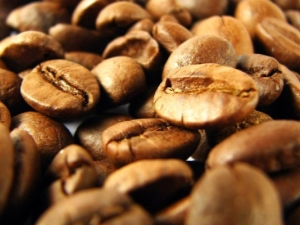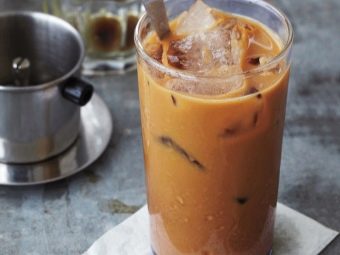Coffee from Vietnam: features, varieties and tips on choosing

This may seem surprising, but Vietnam is one of the world leaders in the production and supply of coffee, competing for the palm with Brazil.In this article we will try to understand the subtleties of Vietnamese grain varieties and determine their main features so that you can make the right choice.
Characteristic
Coffee from Vietnam is very popular among its connoisseurs due to the special refined aroma and richness of taste. It is this description that best describes the local flavored drink. There are several major factors that contribute to this.
- Unique climate. Initially, it was noticed by the French colonialists in the 19th century and they began to cultivate a plant new to the region. The first coffee plantations appeared in the south of the country in the province of Ngean. A little later, the Swiss scientist discovered an ideal place in the mountains near Dalat, the capital of Lamdong province, because of its geographical location. Vivifying moisture and the bright sun of the subequatorial belt enrich the grains with useful substances and allow them to be fed with this extraordinary aroma.
- Traditional national way of roasting. Resourceful Vietnamese use different technologies. But the main thing is the addition of cocoa beans. They give the magic taste of chocolate that you will not confuse with any other.
Kinds
Vietnam is a rather large country and has several climatic zones, which makes it possible to grow almost all the main types of coffee, of which there are not so many in the world. You should not confuse the names of species with consonant names of varieties, which are much more.
- Robusta (Coffea Canephora) - the most popular because of its simplicity and cheapness in production. It has high yields at minimal cost. Resistant to disease and grows at low altitudes. The strongest and dense drink. It compares favorably with the African and Asian counterparts more mild taste and lack of sourness, which is usually inherent in this species.
- Arabica (Coffea Arabica) - not the most common species in Vietnam. Arabica plantations occupy only 10% of the total. She is very whimsical and instantly reacts to changing and worsening climatic conditions with a decrease in yield.
- Excelsa (Coffea Excelsa) - very rare variety. The tree has a large crown and is very sensitive to weather fluctuations. Because of this, it bears fruit quite irregularly. This is the fundamental reason that you cannot meet it in its pure form. Most often used by the local population for the preparation of blends, which significantly changes the taste palette.
- Coulee - high-quality premium coffee. One of the most expensive and elite varieties. They produce coolies in very limited quantities and only in one place - Dak Lake. For its manufacture, the best grains of robusta and arabica are selected by hand. It has a long finish.
- Lyuvak (Chon) - a real exclusive. Paradoxically, the most expensive coffee in the world hails from the poor country of Southeast Asia. Intrigues the minds of gourmet technology to produce it. The fruits of the coffee tree are introduced into the diet of the palm marten (musanga). In the process of fermentation, the shell disintegrates, and the grains are saturated with useful substances and acquire inimitable taste qualities. And only after that they are collected, washed from excrement and dried.
Repeated laboratory experiments and the use of other animals in the production chain could not reproduce the truly unique taste.
Virtues
True connoisseurs assure that only coffee grown in Vietnam has an unusually balanced combination of flavors and flavor. A variety of roasting recipes, based on national traditions, allows you to open a magical bouquet, which easily captures velvet notes of vanilla, soft bitterness of chocolate and cocoa, pepper fragrant, elusive pistachio and berry shades. The addition of fruit syrups during frying gives this noble drink a caramel print. Even the taste of freshly baked rye bread is surprising.Sweet and long aftertaste gives you the opportunity to extend unimaginable pleasure.
Such sophistication falls in love with the first sip and for life. Even the simplest blends have proportions unaccustomed to the European consumer. Traditionally, they include 60% Robusta and 40% Arabica.
Thanks to this non-standard ratio, the mixture is very strong, dense and thick, with a very high content of caffeine. This morning treat, which allows you to instantly wake up and cheer up, but which in no case should not be abused.
disadvantages
Despite all the advantages described above, Vietnamese coffee has some drawbacks.
Unstable quality
The main export direction of Vietnamese coffee (90%) is green beans. This is due to the low level of small farms, which are the main producers of the country. The low level of technology does not allow pre-processing of grains, which entails the low cost of the latter.
Small farmlands often have to harvest during precipitation. And the lack of professional equipment for further drying retains a high moisture content in the beans. The price of such a poor-quality product can be as low as $ 2 per kilogram, while all over the world $ 2 is the average price per serving.
Fake
Unfortunately, the probability of being deceived by tourists is very high. The considerable price of the brand Chon, whose price on the world market reaches up to 1000 US dollars per kilogram, often pushes locals to fraud, especially in the tourist area. Under the guise of the most expensive and extravagant coffee in the world can be sold cheap mixture.
Traveler reviews often turn out to be negative, because when they try at home what they buy as coffee, they do not get the expected effect. The taste is significantly different from the tasting sample, which tricky sellers treat.
How to choose?
It is best to buy coffee directly in the country of origin. But here, the price per kilogram may vary significantly depending on the area. In the tourist quarter Robusta will cost from 10 US dollars per kilogram, and Arabica is a bit more expensive. In supermarkets, the price is much lower - from $ 6 per kg of Robusta. One of the best coffees sold in the area around Dalat.
Choosing among the abundance of Vietnamese varieties, it is necessary to give preference to coffee grains, rather than ground. So you can be convinced of its quality, having estimated the size of grains and quality of roasting. In the market, in souvenir shops and specialized shops you will have a tasting of different types. After that, when you grind and pack it.
If you are lucky enough to get to the farm, specializing in the manufacture of coffee luvak (Chon), then you can buy it for about 200 - 250 $ per 500 grams, which is much lower than the prices on the world market. It can not be cheaper.
How to cook?
Coffee consumption culture in Vietnam is very high. Vietnamese boil it slowly. Making coffee for them is a very important and slow ritual to which they approach with great responsibility. Vietnamese people know that only properly prepared drink will give an excellent charge of cheerfulness for the whole day.
In the traditional understanding of brewing does not occur, and the Turk is not needed. Instead, a special metal filter is used, complete with a press. Such a teapot is called - fin. This is not a tribute to tradition, but a necessity, since it is he who removes the excess bitterness that appears when improperly prepared.
There are several classic Vietnamese recipes. Coffee is hot, cold, with tapioca. There is even an egg recipe. Here are the most common ones.
White coffee with condensed milk
Unlike Europeans, coffee is added to condensed milk here, and not vice versa. To make a drink, take:
- several teaspoons of ground coffee (up to 3);
- 100 ml of boiling water;
- fin;
- a glass or mug;
- 2-3 tablespoons of condensed milk.
Pour condensed milk on the bottom of the glass, then put a metal filter on top, in which we pour the coffee. Top carefully tamped with a press and pour 10 ml of boiling water so that the coffee is steamed. After 15-20 seconds, pour out the remaining water and close the lid. It takes about 5 minutes to properly brew a cup. After that, mix everything with a spoon and enjoy.
Coffee with an egg
A very nontrivial recipe for the average person:
- several teaspoons of ground coffee (up to 3);
- 100 ml of boiling water;
- fin;
- a glass or mug;
- 1 chicken egg.
Prepare coffee on the same principle, but without adding milk. The egg is beaten with a whisk to a creamy state and laid out over the finished drink. First of all, it is carefully eaten with a spoon, and then washed down with coffee. This drink is a great way to gain strength and refreshment during the day.
The presentation of the dish is also very interesting. If the coffee is hot, then put the glass in a bowl with hot water. Cold water is used for cold. When it's hot, Vietnamese drink coffee with ice. To do this, brewed coffee separately, and then whipped until smooth with ice cubes and condensed milk.
Vietnamese coffee is the hallmark of the country. And it is definitely worth it to spend your time and try to cook it in the national spirit.
In the next video you will find an interesting conversation in Dalat about the most popular myths and misconceptions related to coffee from Vietnam.































